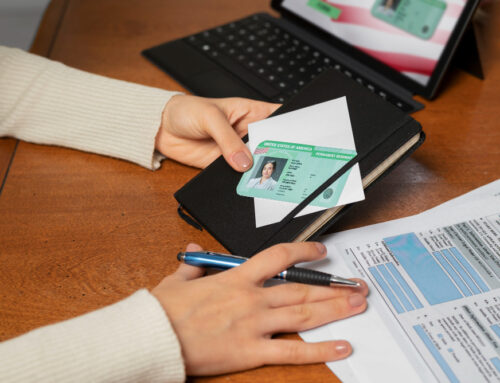Developing news: There is a new process for individuals who are nationals of Cuba, Venezuela, Nicaragua, and Haiti to come to the United States legally and safely, according to The Department of Homeland Security (DHS). On a case-by-case basis, beneficiaries outside of the United States who lack U.S. entry documents may be considered for a temporary parole period of up to two years based on urgent humanitarian grounds. To qualify, eligible beneficiaries must:
- Go through vigorous security evaluations.
- Have someone who supports them in the United States.
- Authorize a conducive exercise of discretion.
- And meet other criteria.
Any individual going through this process must have someone in the United States who will agree to support them during the time of their probation financially. The first step is having the U.S.-based supporter fill out Form I-134A Requesting to be a Supporter and Declaration of Financial Support. Every beneficiary, including minor children that will be supported, shall be listed on this I-134A USCIS form. Upon completion, the U.S. Government will review the information provided to ensure they are eligible to support the beneficiaries they are claiming financially.
There are many factors that supporters should consider when thinking about being able to uphold their commitment throughout their beneficiary’s parole. These factors include:
- Picking up the beneficiary and transporting them to housing immediately upon arrival.
- Ensuring their beneficiaries’ health care and medical needs will be met.
- Assisting the beneficiary with completing the necessary paperwork, such as applying for a Social Security card, employment authorization, and other services they may be eligible for.
- Providing the beneficiary access to learning English, education, employment, and enrolling children in school.
Although a supporter may maintain more than one beneficiary, they must fill out a separate I-134A form for every beneficiary they seek to support. Note: Supporters may NOT fill out an I-134A form for an unnamed beneficiary; all names must always be included in this form.
The Process
Once a United States supporter has filled out the I-134A form for their beneficiary with all necessary information, including email address and contact details, and the form has been deemed sufficient, the beneficiary will receive information on what to do next to be considered for authorization to travel to the United States.
After the beneficiary has received authorization to travel, they shall arrange to fly directly to their destination, where their supporter will receive them. Upon arrival at the port of entry, the beneficiary will be required to be inspected by CBP. It will be required to submit fingerprints, as well as be subject to further biometric vetting. Continue reading for a layout of the six critical steps in the process.
Step 1: U.S.-Based Financial Support
- Through the myUSCIS web portal, a U.S.-based supporter will initiate the process by filling out the required I-134A form, which identifies and collects information from both parties to determine eligibility. Remember, every beneficiary must have their separate form filled out, regardless of if they are minor children or family members. \
- The USCIS will vet the supporter to ensure they can financially support all beneficiaries they are claiming.
Step 2: Biographic Information
- After a supporter has been confirmed by the USCIS, the beneficiary will receive an email with instructions on creating an online account. This online account will hold all the biographic information needed to meet the eligibility requirements.
- To be considered eligible, individuals seeking authorization to travel to the U.S. must acknowledge and confirm that they meet particular vaccine and public health requirements.
Step 3: CBP One Mobile Application Request
- Once all biographic information has been submitted, the beneficiary must add this information to the CBP One Application, along with a photo.
Step 4: Travel Authorization to the U.S.
- After step 3 has been completed, the beneficiary will be given a notice whether their authorization to travel was approved. If approved, the authorization is valid for 90 days, and the beneficiary is responsible for arranging their air travel to the United States. Although an individual may be authorized to travel, this does not automatically guarantee parole or entry into the U.S. Parole and access at a port of entry are determined by CBP.
Step 5: Parole at Port of Entry
- CBP inspects all beneficiaries arriving at the port of entry, and individuals will be granted parole on a case-by-case basis.
- Additional screening and vetting are standard practices during the inspection process. These stipulations guarantee that the beneficiary is not a public safety or national security threat. Any individual that does not meet the requirements and is considered a threat may be referred to the United States Immigration and Customs Enforcement (ICE).
Step 6: Being Granted Parole
- After every step has been completed, the beneficiary will generally be paroled in the United States for up to two years. Once given parole, the beneficiary can be subject to other vetting requirements.
- For individuals who are granted parole, a work authorization form can be filled out on Form Form I-765, Application for Employment Authorization.
At Rivera Law, we hope to make your immigration process as effortless as possible. If you are a supporter of a Citizen of Cuba, Venezuela, Nicaragua, or Haiti, contact us today at 561-651-9322.







Leave A Comment
You must be logged in to post a comment.